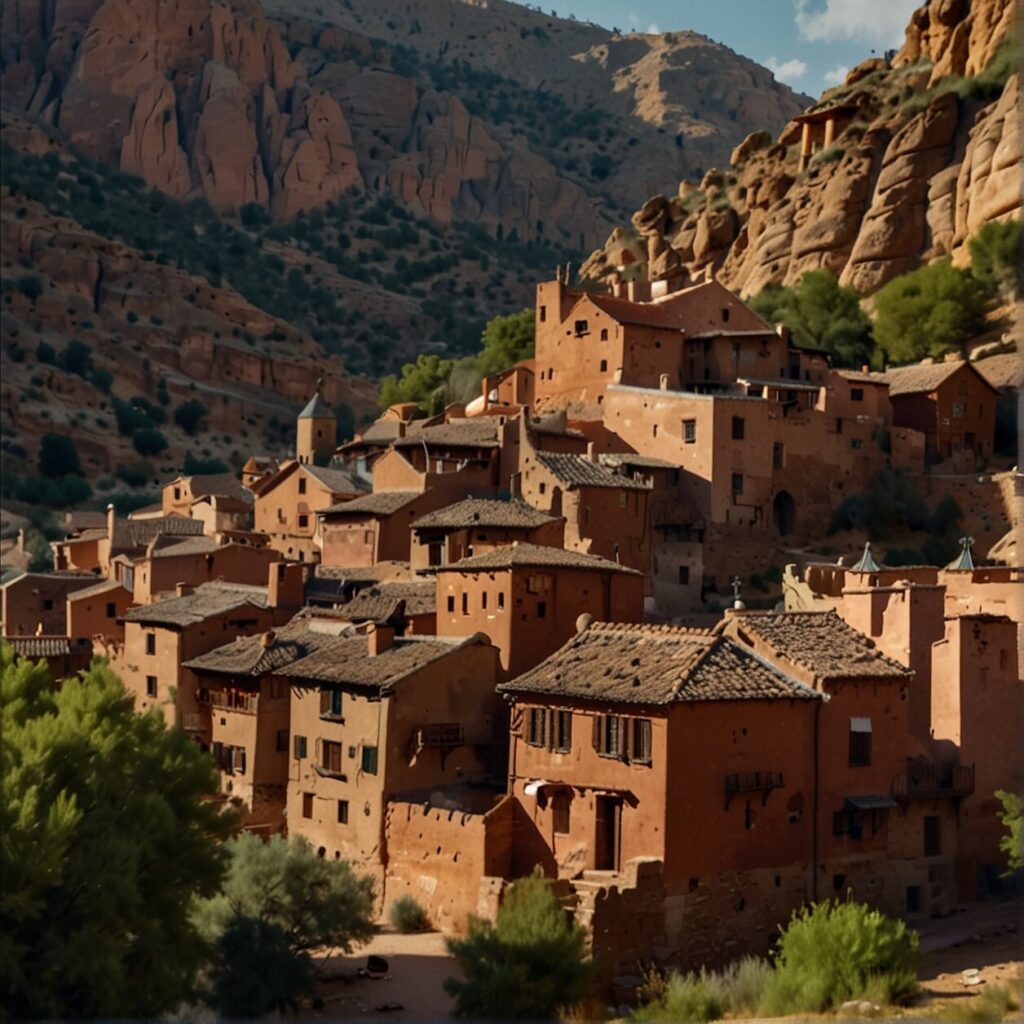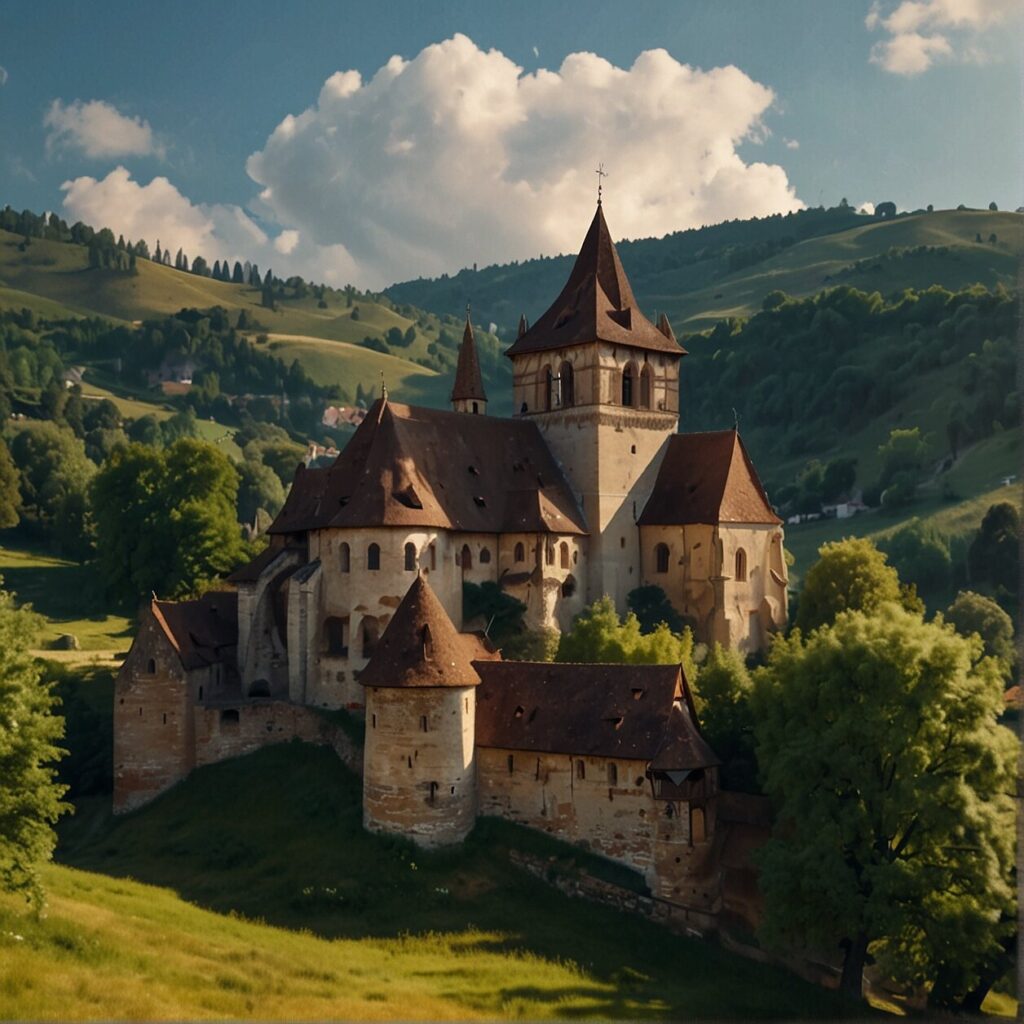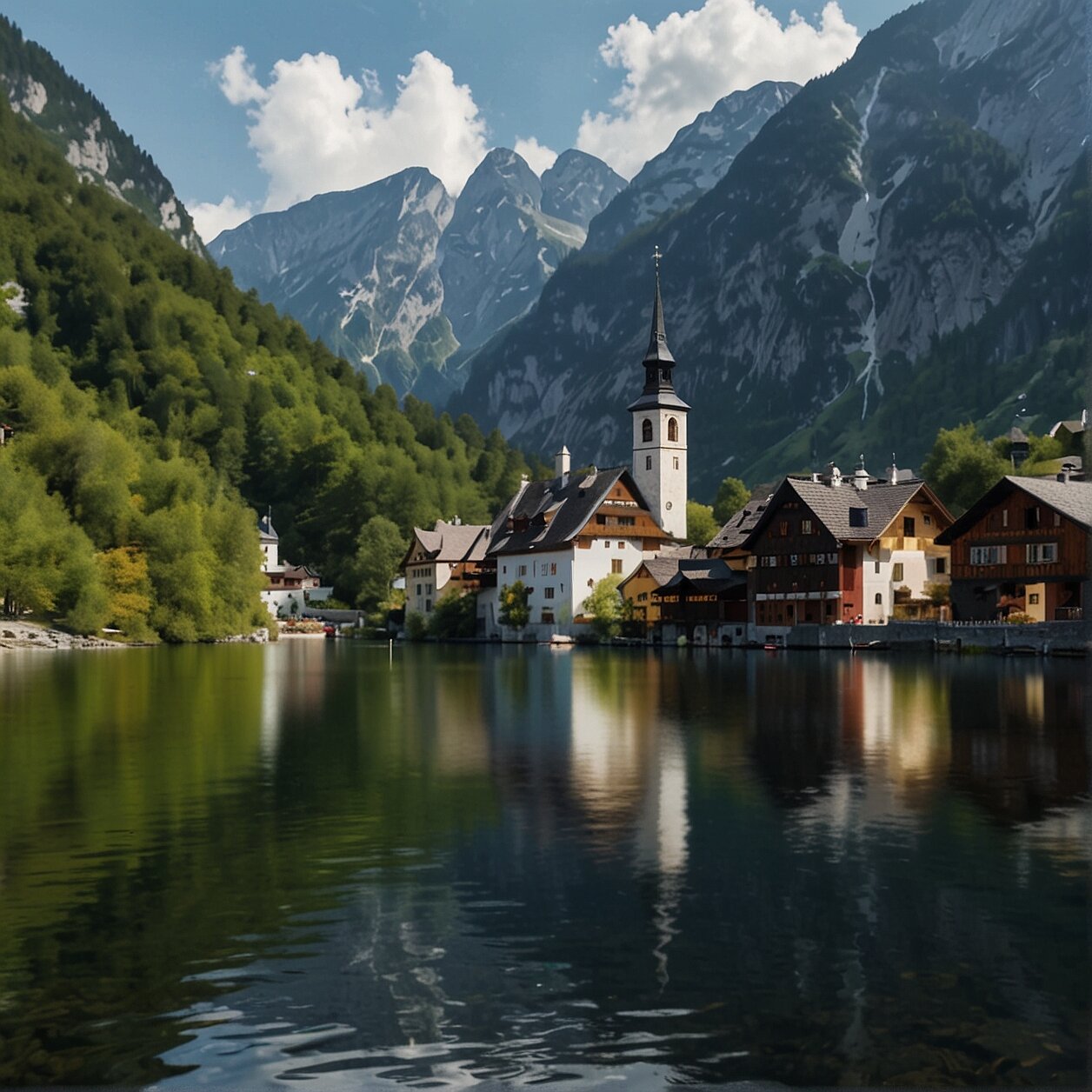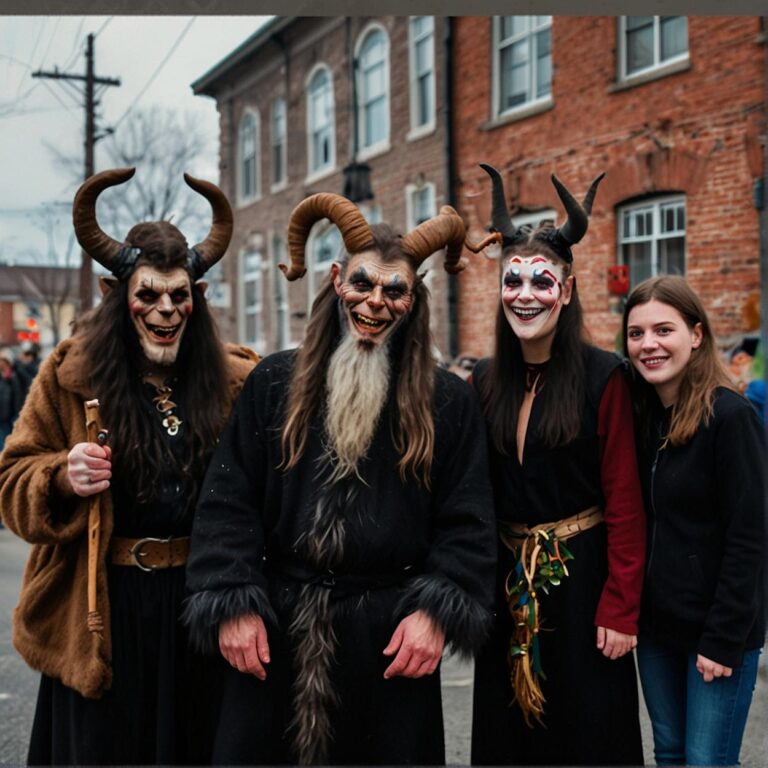Exploring Europe’s Forgotten Villages
Shrouded in mystery and allure, Europe’s hidden villages are a treasure trove of enchantment. Imagine leafy vineyards, old stone walls whispering tales of yesteryears, cobblestone lanes, rustic charm and echoes of folk tunes. These off-the-beaten-path hamlets offer an intriguing glimpse into Europe’s multifaceted culture and history. From the sun-kissed lands of southern France to the craggy fjords of Norway, each nook of these lesser-known villages sings a song of their very own.
“Europe’s overlooked villages enthrall not by their grandeur or their scale, but by the fact that they have stood the test of time, offering us a piece of the past in the present.”
Brick by brick, story by story, these resilient communities have built a life of simplicity and authenticity. Let’s unlock the secrets held within the hidden heartlands of Europe, as we journey together into a world where time seems to have paused, where every stone has a story, and where culture lives in everyday life.
A Journey Through Time: Europe’s Time-Forgotten Villages
Imagine stepping into a painting, out of time and reality, and begin to feel the soothing rhythm of a peaceful life, unspoiled by the chaos of modernity. This is the experience you’ll discover in Europe’s time-forgotten villages. In these tranquil corners of the continent, traditions are still held close to heart, and life marches to a different tune.
The allure of these hidden gems of Europe lies in their powerful simplicity. Ancient cobbled streets wind their way through time-worn stone houses; age-old chapels whisper tails of history and devotion; and over everything, the sense of a life lived deeply, close to the land and the rhythm of the changing seasons. To visit Europe’s lesser-known villages is truly to take a journey back in time.
Take, for instance, the quiet charm of Hallstatt in Austria, a place crouched between a serene lake and an imposing mountain, its houses huddled together with their gabled roofs and colorful facades reflecting in the mirror-like water surface. Or the stone-clad beauty of Albarracin in Spain, with its steep, slim alleys and orange-tinted houses clinging onto the hillside. Each village a testament to the tenacity of tradition and the beauty of simplicity.
It’s in these quiet corners, beyond the reach of mainstream tourism, that you’ll find the soul of Europe, the spirit of its past preserved in the hearts of their inhabitants and the nooks of their hushed lanes. This journey into Europe’s lesser-known villages isn’t simply a travel experience; it’s an encounter with the past, a lesson in history and human resilience, and an opportunity to rediscover a simpler, slower pace of life.

Lost in Time: The Fascinating Stories of Europe’s Hidden Villages
Imagine, if you will, stepping off a train and finding yourself transported back in time. Cobbled streets underfoot, centuries-old stone houses flanking you on either side, and a sense of tranquility that somehow persists even in the bustle of daily life. That’s exactly what awaits you in these hidden gems – Europe’s less explored villages.
Take, for instance, the Slovenian idyll of Stanjel. As one of the oldest settlements in the Karst region, Stanjel boasts a rich history stretching back to the Roman period. Unique features like the centuries old medieval layout that remains largely as it was and the distinctive stone houses that characterize it, create an air of living history. Then there’s the spectacular Ferrari Garden, a masterpiece of architectural and landscape design that adds an arresting touch to the village’s charm.
Moving eastward, the forgotten corners of Romania afford you a peek into a different, yet equally enchanting world. Biertan, nestled in the heart of Transylvania, could easily pass off as a setting from a Grimm Brothers’ fairy tale. Its fortified medieval church, a UNESCO World Heritage site, offers you a glimpse into Romania’s Saxon past, while the sight of villagers going through their existence in much the same way their forefathers did, leaves you lost in a romantically pastoral reverie.
Not to be left behind, Portugal comes with its own set of under-the-radar gems. Monsaraz, perched atop a hill in the Alentejo region, lays before your eyes a view that stretches from the Alqueva dam to beyond the Spanish border. However, its greatest appeal lies in its well-preserved medieval aura – walk its narrow streets, have a chat with the friendly locals, or simply sit by the castle walls, watching the vast landscape below and time seems to come to a standstill.
Each of these unspoiled destinations has its own unique tale to reveal, a captivating narrative formed by the passage of time and the lasting imprint of generations past. So, as you wander these hidden paths, keep your mind open and your heart alert, for your journey is not just through picturesque landscapes, but also through the stories of Europe’s fascinating past.
Local Delights: Food and Wine of Europe’s Forgotten Villages
Are you a bonafide foodie, dreaming of the perfect culinary adventure? Without a doubt, exploring the diverse food traditions tucked away in Europe’s hidden villages are the ticket to your culinary nirvana. When it comes to gastronomy, these places have a rich tapestry of age-old recipes that are mouthwateringly delectable.
Think of the rustic charm of a family-run taverna in a remote Grecian village, savouring locally sourced ingredients in traditional dishes that have been lovingly passed down through generations. Or imagine sitting in a cosy Italian osteria in the heart of a forgotten hamlet, indulging in regional specialities, each dish revealing a story of its own. These are experiences that stir your taste buds and your soul.
Aside from the unique flavours and time-honoured techniques, there’s another sensory delight waiting to be unwrapped – the region’s indigenous wines. Discovered in vineyards tucked away in the stunning landscapes, these are wines with as much character and depth as their surroundings. Each sip lets you taste the local terroir, or the character imparted by the land, climate, and care that grapes receive.
Try a sip of the hearty Banyuls wine from a humble vineyard in French Catalonia or take in the nuanced complexity of a resiny Retsina in a quaint Greek village. There are also the full-bodied reds from the lesser-known vineyards of Italy’s Umbria region. Wherever you go, you’ll find that these wines create the perfect canvas for a symphony of flavours that the dishes offer, enhancing your gastronomical journey.
So why wait? The lesser-known hamlets of Europe are inviting you to embark on a unique culinary journey. Treat your taste buds to the symphony of flavours offered by local cuisines and discover a world of wines that are as unique as the villages themselves. These experiences, my friends, are what make traveling truly unforgettable.
Celebrations and Festivities in Europe’s Hidden Villages
You’ll discover that each of Europe’s hidden villages has its own unique set of festivities, rich with local culture and traditions, lending a hand to the charm that keeps adventurers like you coming back for more. You may even find yourself dancing at a local festival or marveling at uncommon celebrations that proudly preserve their colourful heritage.
Stars Over Valensole, France
Think about Valensole, a village tucked away in the heart of Provence, France. Every July, this modest township twinkles under a myriad of stars as they celebrate La Nuit des Etoiles or Night of the Stars festival. Locals and visitors alike lay on blankets and gaze at the celestial spectacle overhead, fostering a communal bond under the vast cosmos.
Falling Flowers in Monsanto, Portugal
Switch your focus to Monsanto, a petite Portuguese village perched on a hill. Once a year, in early May, the slopes blush with the Festival of the Trays – or Festa das Cruzes. Young women descend the slopes towards the village’s castle, wearing headpieces decorated with paper flowers and bread loaves. It’s a festival not only captivating to the eyes but also challenging your conventional ideas of celebrations.
Threading Heritage in Maramures, Romania
Now, imagine Maramures in Romania during the Autumn ‘Festival of the Weavers’. Here, experienced artisans demonstrate their skill in traditional weaving under the glorious and piercingly crisp fall skies. When the prized rugs are finally completed, they’re paraded around the village, letting you witness the living art of a tradition spanning centuries.
In these isolated settings, undisturbed by the rapid pace of modern world, authentic customs continue to flourish. It’s here, in these fascinating celebrations where you truly taste the essence of life in Europe’s hidden villages and taste the offbeat charm that they hold. So, come, immerse yourself into a world where tradition is the heart of celebration.

Off the Beaten Path: Europe’s Most Enchanting Hidden Villages
Picture yourself wandering through cobblestone streets, surrounded by rustic houses that breathe history and tradition. Imagine the aroma of fresh bread from the local bakery filling your senses, or the joyous chatter of villagers discussing their day at a nearby café. Sounds enchanting, right? These are the delightful experiences that await you in Europe’s hidden corners.
In the heart of Italy, there’s a charming medieval village called Civita di Bagnoregio, often referred to as ‘the dying town’ due to its dwindling population. Despite the melancholic moniker, this village, perched atop a hill, offers staggering views of the surrounding valley. The stone arch leading into the town, the flower-draped balconies, and the town square’s rustic clock tower will transport you back centuries.
The Canary Islands are lauded for their sun-kissed beaches, but venture into the mountains and discover the village of Tejeda. Its beauty is so striking; it’s often dubbed as ‘the prettiest village in Spain’. White, cubical houses perch precariously on the mountainside with the vibrant flora offering a stark contrast to the barren landscape. The aroma of almond blossoms in full bloom is an intoxicating treat for your senses.
Cotswold, in England, is home to several unrecognized villages each saturated with quintessential British charm. Take Bibury, for instance, cited by famous designer William Morris as ‘the most beautiful village in England’. The terraced cottages with their vine-covered façades, a quaint church, and a stream full of trout create an impeccable hamlet.
Venturing to France, Giverny is a colourful artist’s dream. Famous for being the hometown of Claude Monet, this village remains relatively untouched by the tourist throng. Meander through Monet’s home and his flower and water gardens, which influenced many of his famed artworks.
The Broadchurch-famed West Bay, in Dorset, UK, gives you a dramatic coastline with steep cliffs packed with millions of years of geological history, while Eibsee, an Alpine village in Germany, is nothing short of a fairytale with pristine blue lakes, surrounding forests, and stunning views of Zugspitze, Germany’s highest mountain.
These hidden treasures offer a delightful contrast to Europe’s bustling cities. They invite you to step back, slow down, and experience life at a different pace, savouring each moment. So, on your next European vacation, venture off the beaten path and discover the charm of Europe’s most enchanting hidden villages.
FAQ’S
Of course, when planning trips to these breathtaking but less-traveled corners of Europe, you might have specific queries and concerns. Don’t worry! We’ve gathered the most frequently asked questions (FAQs) and provided comprehensive answers to satisfy your curiosity. Ready to unlock the answers to your burning questions? Let’s dive right in.
What are some traditional foods in Europe’s lesser-known villages?
The continent of Europe, with its vast diversity, offers you a smorgasbord of regional dishes, each with a distinct taste and character. Let’s embark on a culinary journey into the heart of its lesser-known villages, famed for their traditional foods.
Take a start from the highlands of Scotland with a hearty dish of ‘Haggis.’ A savoury pudding containing sheep’s heart, liver, and lungs mixed with onions, oatmeal, suet, and drizzled with a delicious stock! Though it may sound off-putting, this robust fare is actually a delight for those who crave strong flavors.
Next, let’s set off to the quaint villas of Troo, an idyllic French castle town. Here you’ll find ‘Rillettes,’ a sumptuous slow-cooked meat delicacy similar to pâté. This pot-roasted pork dish, simmered slowly in its own fats and juices, and then shredded and cooled, results in a spreadable feast to be enjoyed on fresh, crusty baguettes.
Crossing into Spain, in the offshore paradise of Formentera, sink your teeth into the island speciality ‘Bullit de peix.’ This traditional fish stew served with aioli and rustic bread offers a taste of the Mediterranean that will surely do wonders for your palate.
So, as you chart your adventure across Europe’s hidden corners, make sure to soak in the gastronomic culture. These lesser-known villages provide a magnificent window into the heart of Europe – one that’s filled with deep flavors, substantial love, and an intimate appreciation for tradition.
What cultural experiences can I expect in Europe’s forgotten villages?
When you venture into Europe’s lesser-known villages, you set yourself on a path to encounter substantial cultural variety. Let’s delve into what you can expect during your visit.
Here, nestled amid rolling hills and sweeping landscapes, traditional ways of life still hold strong. Residents, often dressed in traditional clothing, go about their daily routines, providing a rare window into centuries-old customs. You’ll hear myriad of languages and dialects, some spoken by only a handful of people remaining in the world.
Handcrafts form an essential part of the cultural tapestry. It’s not unusual to come across artisans meticulously creating beautiful pieces of work, whether it’s delicate lace, hand-woven baskets, or intricate pottery. Participating in a workshop, you’d have a hands-on opportunity to learn these age-old crafts.
Religious traditions also feature prominently in these villages. Regardless of your own religious beliefs, being a spectator at a local religious festivity can be a deeply enriching experience. Expect colorful processions, traditional music, dancing and communal feasts that form an integral part of these celebrations.
The built environment too speaks volumes about the cultural history of these sites. You’d encounter medieval churches, stone-cobbled streets, and rustic homes that have stood the test of time. A walking tour of the village, guided by a local, could enhance your understanding of the architectural styles and historical significance of the structures.
In terms of music and dance, expect to be serenaded with traditional tunes, perhaps by an ensemble of musicians playing folk instruments. You might even find yourself swaying to the dance beats at a local square during an impromptu folk dance session.
A vital element not to be overlooked is the interaction with the village’s inhabitants. Casual conversations with the locals often turn out to be as enlightening as formal guided tours, offering you insider perspectives and tales that even the best travel guide can’t provide.
Ultimately, the cultural experiences in Europe’s lesser-known villages are about immersing yourself in the rhythm of daily life, being receptive to new experiences, and letting the local charm work its magic on you.
How to plan a trip to Europe’s lesser-known villages?
Composing a successful travel plan to Europe’s lesser-known villages requires a bit of groundwork, but the efforts are adequately rewarded with unforgettable memories. Here’s a helpful guide to make your planning process easier and enjoyable.
First and foremost, research is key. Put some energy into familiarizing yourself with the location, culture, traditions, and regional delicacies of your chosen destination. The more you know about the village beforehand, the more you can enjoy the experience and engage with the community. Look beyond the travel guides and delve into local blogs and social media posts to get a real feel for the destinations.
Additionally, logistics plays a crucial role in your travel planning. Consider how you’re getting to the village and how you’re moving around once there. While public transport might work in some places, a rented car or bicycle could make exploring less of a chore in others. Don’t forget about accommodation; opting for local guesthouses or home-stays can enrich your cultural experience, offering insights into local life that larger, impersonal hotels cannot.
Also, despite all the planned activities and sightseeing, don’t forget to budget some ‘free’ time. Unplanned moments can turn out to be the most memorable. Enjoy spontaneous strolls through the winding lanes of the village, indulge in local delicacies at a farmers’ market or take a swim in a hidden creek.
Last but not least, flexibility is a significant aspect of your plan. Be prepared for the unexpected and don’t be afraid to veer off the itinerary if something unique catches your eye. After all, the charm lies in the unpredictability of lesser-traveled paths.
Remember, traveling to Europe’s lesser-known villages is more than just a holiday; it’s an opportunity to immerse in a different culture, savor new tastes, and make meaningful connections. Your trip will not only be a journey through charming landscapes, but also a journey into a different way of life, full of rich histories and traditions.
What are the best times to visit Europe’s hidden villages?
Planning a trip to Europe’s hidden villages can truly be an unmatched experience, but timing is everything. When you visit these entrancing locations can heighten that sensation, allowing you to fullly immerse in their seasonal spectacles and cultural events.
Let me guide you through, season by season.
Spring
Spring is often considered the most beautiful season in Europe’s hidden villages. Blooming flowers adorn the streets, the weather is gentle, and local festivals are abundant. Places like Hallstatt in Austria or Bled in Slovenia, with their sparkling lakes, become ethereal with the colors of spring. It’s also a great time to participate in Easter rituals that are unique to these locales.
Summer
Summer is the high season in most of Europe, and even lesser-known hideaways come alive, yet rarely get overcrowded like bigger cities. Medieval streets of Albarracin in Spain or the colorful vistas of Manarola in Italy, embody the vibrant essence of European summer time. Cultural festivities during this season are lively, with local markets and outdoor events providing delightful food, music, and artisanal goods.
Autumn
The beauty of autumn in European villages is unparalleled. The changing hues of the foliage create stunning landscapes, especially in locations such as Durbuy in Belgium or Cesky Krumlov in the Czech Republic. Harvest season also means delightful local food and wine experiences, perfect for culinary enthusiasts.
Winter
Winter presents a completely different charm in these villages. Snow-covered rooftops, the twinkling of Christmas decorations and a certain stillness in the air invoke a truly magical vibe. And, let’s not forget about winter markets and special Christmas and New Year’s festivities celebrated with distinct local traditions.
How can I immerse myself in the culture of Europe’s hidden villages?
Immersing yourself in the culture of Europe’s hidden villages begins with an open heart and a curious mind. It’s about embracing the experiences, no matter how new or foreign they might seem. The following tips will help you truly integrate into and appreciate these unique communities.
Learn some local language: While most villagers may be able to communicate in English, they will surely appreciate your efforts to learn a few basic phrases in their local language. “Hello,” “please,” “thank you,” and “goodbye” are a good start. It’s a humble gesture that will invite smiles and warms up conversations.
Eat like a local: There’s no better way to understand a village’s culture then by indulging in their food. Try the local specialties, whether it’s a home-confetti pasta dish from an Italian trattoria or the creamy stews of a Hungarian kitchen. Food often tells the story of a place, and these tales can lead to you experiencing flavours you wouldn’t find back home.
Engage with the community: Remember, these villages aren’t just tourist attractions – they’re homes. Make an effort to connect with the locals. Attend community events, whether it’s a weekly market or a special festival. Residents will surely welcome your interest in their way of life and you’ll go home with some unforgettable memories.
Respect the customs and traditions: Each village in Europe carries its own set of traditions that have been passed down through generations. Some may have certain dress codes or expected manners. Learning and respecting these customs will show your entries and respect to the custom, earning you genuine acceptance from the locals.
Lastly, always be aware that you’re a guest in these places. Respect the people, the traditions, and the environment. Demonstrating respect will ensure you’re always welcome, and it’ll create connections that will enrich your experience.







